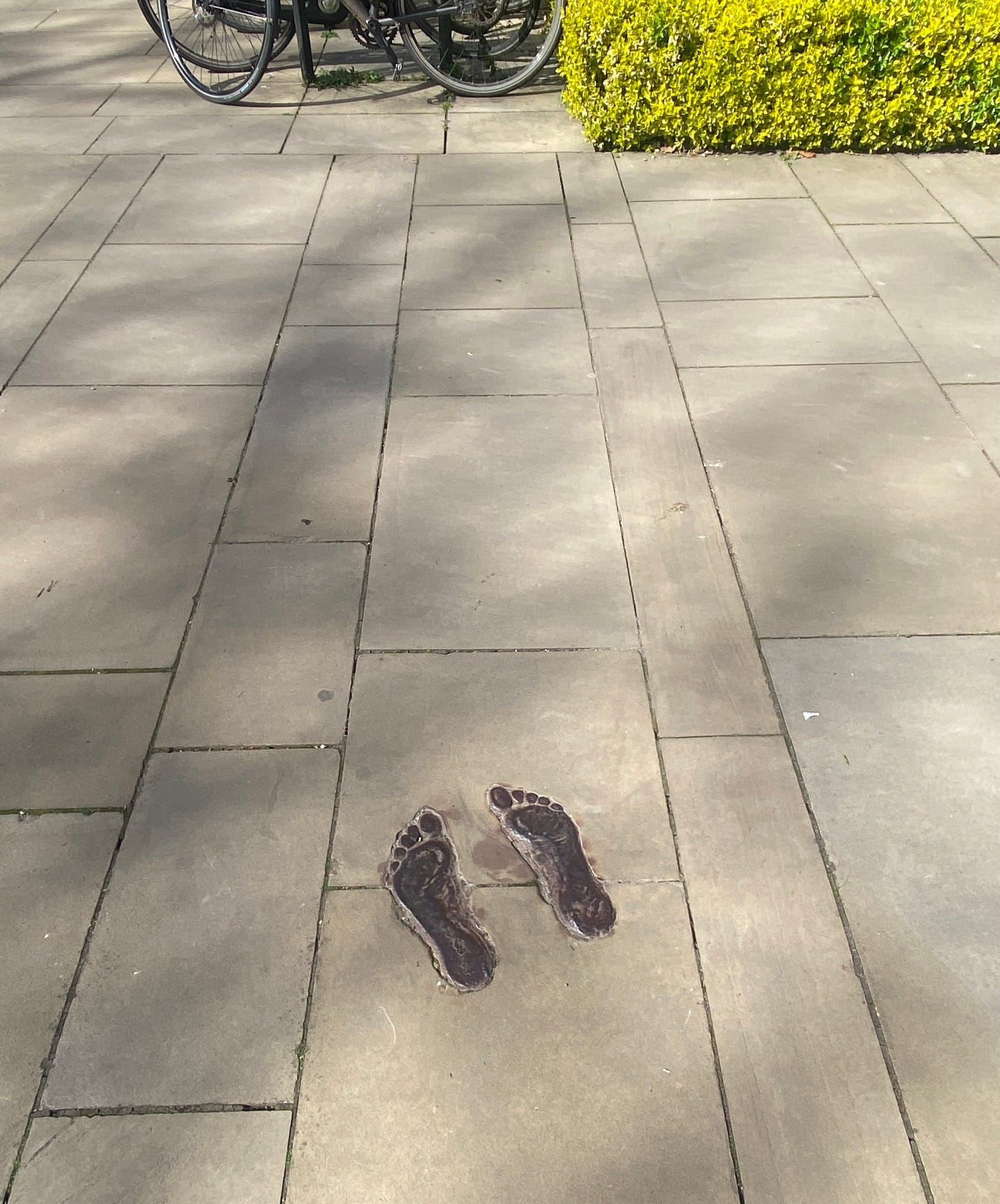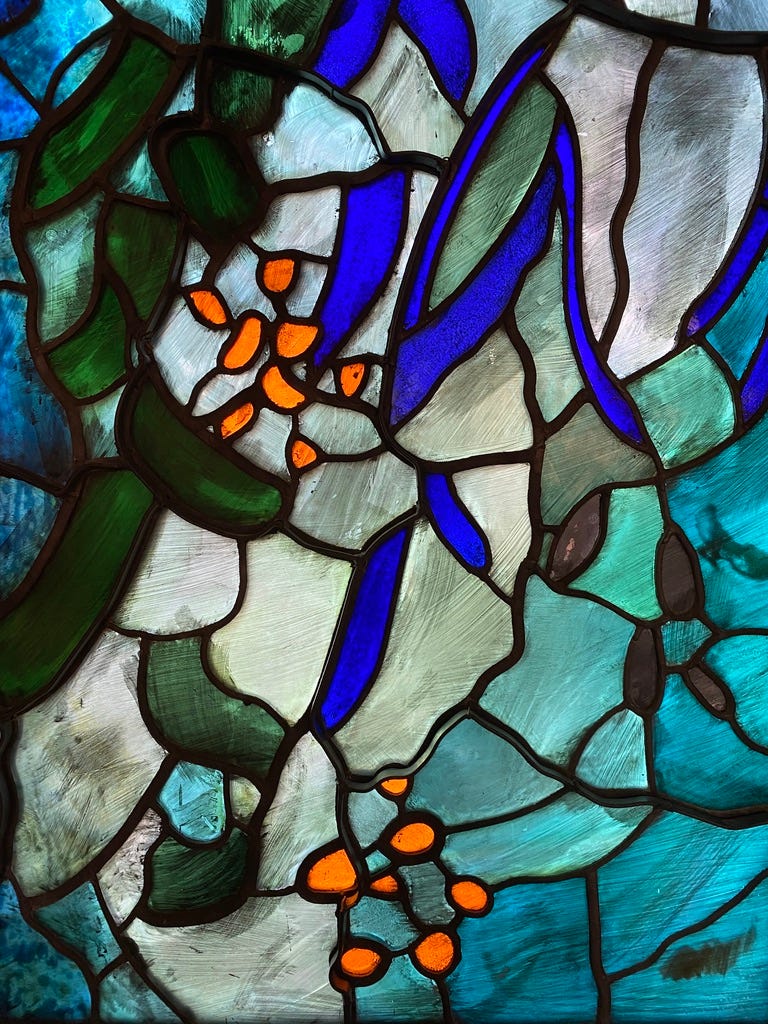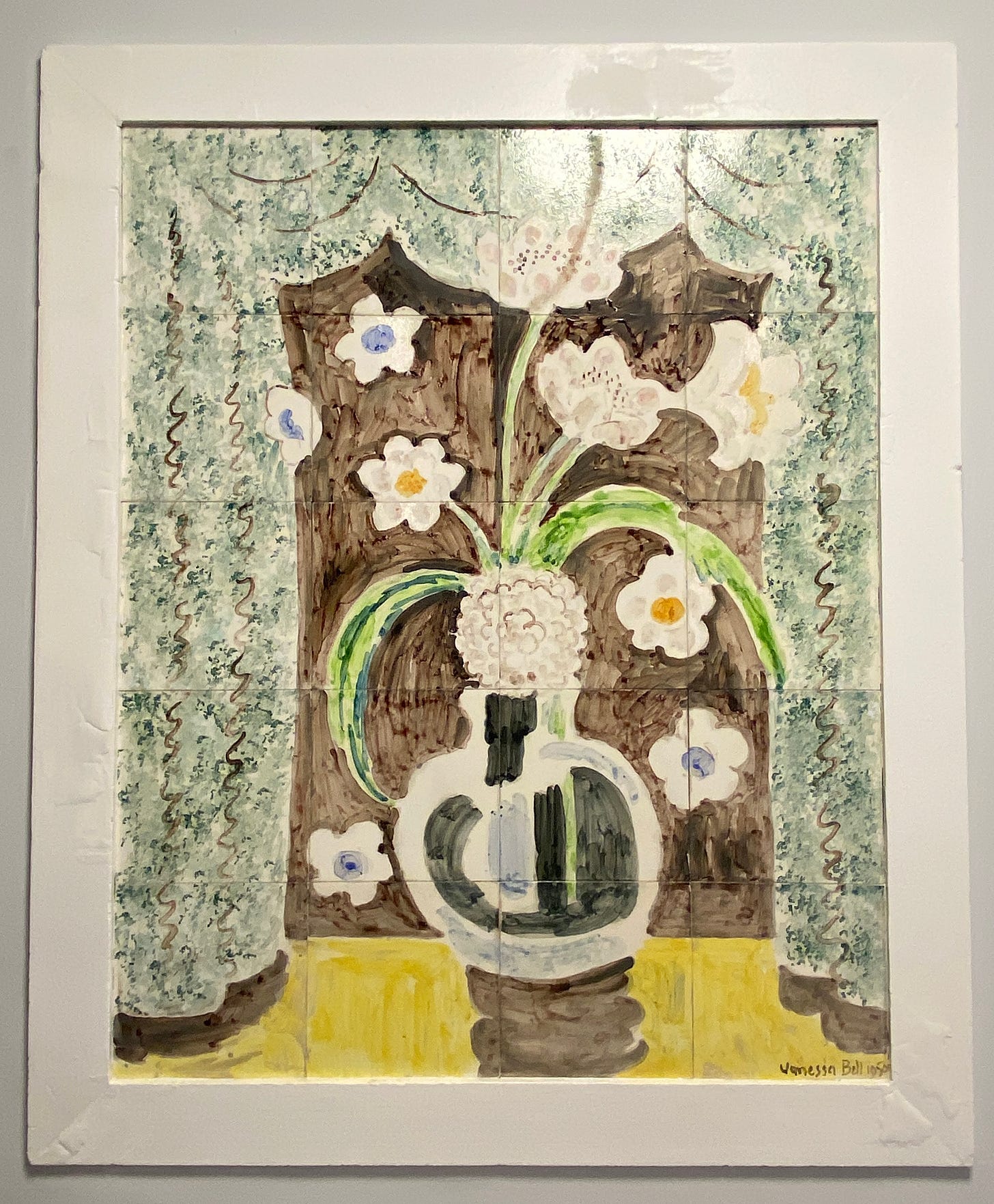In the space of ten days last month, I was fortunate to get inside two places in Cambridge to which, in the normal course of things, I’d never have access. Both are parts of King’s College which has extensive links to the Bloomsbury Group.
First, I went into EM Forster’s set of rooms - now the Grad Suite - which he occupied in his later years on a sort of grace-and-favour basis (no teaching involved). He brought his own impressive fireplace, as you do, from his family home and took up residence from 1949 until his death in 1970. The room was never intended to be a ‘shrine’ after his death (correspondence in the archive make this very clear) and there’s little trace of him there, apart from the fireplace and now a rightfully restored bookcase. But the glimpse into mid-century life in a men’s college was fascinating.
Years ago I read The Masters (1937) and other titles in the series by CP Snow until I had had a surfeit of the in-fighting and gossip in the senior common room of an unnamed Cambridge college. It was these petty power struggles that also tainted my reading of An Unexpected Professor by John Carey who manages to recall - and use against them - everyone’s class of degree. No matter that someone got their second at Oxford when they were twenty-one and may very well have gone onto do amazing things, that’s them consigned to the dustbin forever. Whereas, obviously, a ‘brilliant first’ at the same age defines you for the rest of your life.
[‘King’s College Chapel, Cambridge' (one of the Cambridge Series, 1956-66) by Walter Hoyle]
Anyway, back to being allowed inside hallowed halls. After seeing Forster’s ‘set’ we had tea in the Senior Combination Room surrounded by paintings by Bloomsbury artists, and my goodness me I had no idea King’s owned so many. It’s a private collection, bequeathed by John Maynard Keynes, so you’d never come across it on the internet, but it must be incredibly valuable to researchers (do they know of their existence, even?). And it’s not just the Frys, the Grants, the Carringtons, and the Bells, it’s all the other paintings, prints, etchings, drawings -
and an Antony Gormley sculpture (‘True, for Alan Turing’, 2024) which, at 3.7m, is less hidden and can be clearly seen when you queue along the other side of Front Court to get into Evensong in the Chapel.
[‘Earthbound: Plant’ (2003)]
The strangest Antony Gormley installation in Cambridge, though, is actually truly, properly hidden. All you can see of an upside-down completely buried Gormley figure on the Downing site are the soles of the feet - and there’s no plaque or anything so people simply miss them. All that money spent on art you can’t see. It’s so conceptual it hurts. But something else bothers me about this because what you see is actually a footprint ie an imprint of the sole as made from above the earth, and not what you’d see if you unearthed an upside-down body. Or am I just too literal and not sufficiently conceptual?
The King’s College art collection is clearly fabulous but, like Gormley’s buried man, it is invisible to Joe Bloggs since King’s doesn’t share it with outsiders. Maybe opening the wondrous Chapel for Evensong suffices and, honestly, if you go in winter when all the candles are lit, it is utterly wonderful (and free to attend).
[‘Trellis’ (2010)by Annie Lawson in the Murray Edwards collection - she makes great rugs]
This is in contrast to Murray Edwards which has the fantastic Women’s Art Collection (open daily), or Jesus College which has an extensive outdoor sculpture collection (plus a cafe), or Girton College where you can look at the People’s Portraits, or Churchill College with its Hepworth sculpture, Geoffrey Clarke gates, and John Piper glass in the chapel,
[detail of Piper/Reyntiens glass in Robinson College Chapel]
and the even better, enormous Piper/Reyntiens window in Robinson College.
[Vanessa Bell, 1950]
Not long after being mesmerised by the idea of having tea and biscuits and academic chat on a daily basis in what is effectively a very upmarket staff-room full of Bloomsbury art, I was invited to see something else I didn’t know existed and is only seen every day by the people who pass it in the corridors of the building: is a small but beautifully formed collection of hand-painted tiles by Vanessa Bell.
Plus one gloriously camp tile panel by Duncan Grant. These were all commissioned by King’s College in 1950 to go on the walls of the new Garden Hostel.
The majority are small botanical studies, very free and loose and sometimes difficult to identify, but the four larger panels with vases of flowers at windows with curtains or drapes are very Vanessa Bell, and are like so many of her paintings and particularly her dust covers for Virginia Woolf’s books. They are set at regular intervals along the corridors (very un-Cambridge where staircase living arrangements are the norm) and form a fascinating, rarely-seen collection of Vanessa Bell’s late work (just one of the original designs sold for more than £4,500).
[part of the annual cycle of red and yellow planting in pots by the Porters’ Lodge at Peterhouse]
Living in Cambridge I am used to the idea of the colleges having enormous amounts of hidden riches. Nevertheless, as an outsider I feel there is access to a huge amount that belongs to the University (see above colleges and their gardens, chapels, museums, Kettle’s Yard, the Fitzwilliam). But to have the occasional peek behind locked doors and gates is a real treat.
[The Regal, November 1963]
I mean, even John Lennon wanted some inside Cambridge knowledge. The Beatles played at the Regal Cinema in Cambridge twice in 1963 (downstairs is now a Wetherspoons, and upstairs is the Arts Picturehouse), and there’s a nice story about him asking Tony Palmer who was there to write an article for his college newspaper to give him a tour. John Lennon returned the compliment by giving him his number and later sharing his inside contacts, and Tony Palmer went on to work with The Beatles and just about every big name in music. Maybe it’s good to share.
Happy Sunday!
















Every week is an education in all my favourite things. Thank you, Jane.
How marvellous..Thankyou for showing some of the hidden gems…shame they are hidden away…